I tried to finish transport back in number [304] but didn’t get beyond cars. Let’s see how far we can get this time.
Town Busses
In Ilford and I think throughout the country, we had double-decker red busses. I can’t find a suitable picture but the model above shows how they were – no doors but open at the back for access. With a slow moving or stopped bus in traffic it was possible to get on and off between bus stops. It was probably not allowed but it happened a lot, especially getting off.
You will have read of my fond memories of bus tickets. The driver was supposed to concentrate on driving and he had nothing to do with tickets or the passengers. Every bus had a conductor, who went round issuing tickets. Sometimes an Inspector would get on and check.
[I don’t know how it worked but drivers were never women. That was unthinkable. Many conductors were women. Yes we called them bus conductresses – that’s the way the language used to work then.]
They were double-decker and had conductors but a bus ride was much the same then as it is now. There were push-buttons on the bus for a bell. Many bus stops were marked as ‘Request Stops,’ where the driver would only stop if you rang the bell (or if someone at the stop put out an arm to signal a request to stop.) I don’t think that happens now. [Sorry but I hardly ever use the bus now so I don’t know so much about modern busses.]
As a Senior Citizen I have a bus pass now giving me free rides throughout the country. That certainly didn’t happen then.
One other difference – smoking was permitted on the top decks only.
Other Bus and Coach
I didn’t travel around much as a child and as a teenager I stayed fairly local. I don’t think I ever saw a single-decker bus. The red busses were relatively short routes in and around the borough of Ilford (later Redbridge,) and I think similar local busses operated in all other towns. I was aware of a separate system of green busses. I think these were also double-decker and may have been called something like Green Line. They were country busses going to distant places like East Ham. I never went on one.
Coaches ran in much the same way as they do now but again I can’t report much from experience. They were not as comfortable, not heated so well and certainly did not have seat belts [and no free wi-fi!] As always it has been difficult finding pictures and it’s hard to date those that I do find.
I think both of these pictures show Cheltenham Coach Station in the sixties or seventies. After moving to Cheltenham in 1969 I used to travel by coach fairly often. This huge coach station acted as a central hub. Routes from all over England arrived at Cheltenham every day and then at 2:00 p.m. coaches left again on routes everywhere. You can imagine the traffic as so many coaches simultaneously left through town!
I think it changed over twenty years ago so that Cheltenham now has just a few coaches going from its much smaller local bus station. If I travel now to Norfolk, which used to be a direct route, I have to go via London Victoria or Birmingham with a long wait. It takes twice as long! The site of the old Coach Station is still there, currently serving as a car park. Various proposals for building developments there have come and gone!
Taxis
As far as we were concerned in Ilford, taxis were the standard big black London Taxis, fairly similar to those we still have. I think the same was true everywhere. You hired one by waving it down in the street or going to a taxi rank. I remember when I was very young being so jealous when my younger brother had a ride in a taxi. He had broken a collar-bone and was being taken to hospital!
Minicabs hired in advance by telephone started in the late sixties. These were normal cars adapted for private hire rather than the big black taxis.
Tube Trains
Using the underground was as easy as hopping on a bus. In those days you bought tickets at the ticket office (by queueing up and paying in cash. That was the only option.) There was no automated ticket recognition so you could get as far as getting on the train without a ticket. But when you came out of the station you passed a barrier and showed your ticket to a ticket collector as you exited.
The picture above shows a Central Line train, basically much the same as today. The upholstery, seat rests and wooden floors are a bit different. The way the trains ran and the sliding doors were similar to today. Of course smoking was allowed. (Trains always had eight carriages. The last one was always non-smoking and possibly one or two others.)
I think this map of the London Underground dates from about 1960. It has been very difficult to find on the Internet!
If you compare this with the current map you will notice that the Victoria Line (opened in 1968,) Jubilee Line (1979) and Docklands Light Railway (1987) did not exist back then.
There are many other changes of detail but to me the most significant one is that the end of the Central line from Epping to Ongar (at the top right of the map) is no longer part of the London transport system. This section is now run as a heritage railway line.
Ticket pricing was much simpler (as will be explained when we come to overland trains) and busses and underground trains were both run by London Transport. You could buy a Red Rover ticket, which could be used all day for all London busses and tube trains. It was either 14s or 14s 6d. [That’s 70 or 72.5 pence now.]
Before the ‘Beeching Axe’ in the sixties there were many more local lines that have now disappeared – or become footpaths or cycle paths. This was well before the privatization of the railways and British Rail was a nationalized organization.
[Wikipedia has a good entry for the Beeching Cuts. Richard Beeching was the chairman of British Railways. In 1962 he published a report that identified 2400 stations and 8000 km of railway line for closure (over half the existing stations and about a third of the route miles) to stem increasing losses and rail subsidies. In 1965 in his second major report he proposed that only 5000 km of the remaining 12000 km of trunk railway should be selected for future development – so that traffic was just routed along nine main lines. Not all of his recommendations were followed but there were vast cuts during the sixties.]
Trains had compartments and corridors. You can still see the old style in the Hogwarts Express of the Harry Potter films. They lacked the comforts of modern rolling stock. Carriages had little heating and no air conditioning in the summer. They had windows that opened. The passage of the trains was noisier and more uncomfortable as the rails were made of sections with gaps between them. With the invention of an alloy that did not expand with heat, rails were gradually replaced by the continuous, welded lines of today. This has allowed for higher train speeds.
In some ways, train journeys were more formal and upmarket. Journeys between cities took more time than today, and in that time the restaurant car would serve formal restaurant meals with waiter service – not just the limited buffet service which replaced it. Now not much remains apart from a trolley serving coffee.
Cross-country mail used to go by train and was sorted by hand on the trains – no, we didn’t even have postcodes!
Ticket prices
You will have noticed one of my pet moans – about de-nationalization to encourage competition and the consequent wide array of price options and choice. Back in the fifties, if we wanted a bus or coach or train there was no choice of service provider and almost no choice of ticket.
If you wanted a train ticket, which you bought at the station ticket office, you could buy a single or return ticket. That was it. A return was slightly cheaper than two single tickets and it saved you queueing up twice. Single tickets were valid for any route to the named destination and return tickets were valid for three months.
I think the off-peak return started in the sixties. This was a one-day return ticket and you couldn’t travel in the rush hour. The only other ticket options were the special ones that gave unlimited travel for a day or a week.
Heathrow Airport in 1955
Foreign Travel
The fifties were before the general introduction of jet transport, and air travel was not for ordinary people. There were no charter flights for holidays, no jumbo jets, no low cost airlines. We had just the two national air lines BEA (British European Airways) and BOAC (British Overseas Airways Corporation) merged in the seventies to form British Airways. London Airport was renamed as Heathrow Airport in 1966 as Gatwick Airport developed. Heathrow and Gatwick have both expanded much in their traffic levels since. (Stanstead and Luton were much later in their development as London Airports.)
There was no Channel Tunnel but you could cross the channel by ferries, of which there were many more than today. My first travel abroad was in the late fifties with the Boy Scouts. It was a day trip from Dover to Boulogne-sur-Mer. We had five hours in France. They managed it without passports – somehow on a sort of group passport. It was long before the Euro and before conversion to the 1960 New Franc (which replaced 100 old francs.) You could buy 100 FF for 1s 6d. I think we managed on about 500 francs. We didn’t do much and had enough knowledge of the language to buy some chips for lunch.
Here are two busses at Ilford. I have just found the pictures – not sure of dates.
I have enough for a few more posts but have to juggle odds and ends a bit …



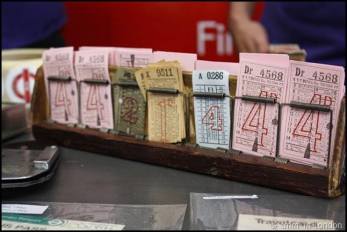

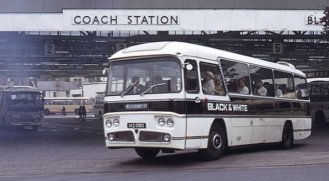
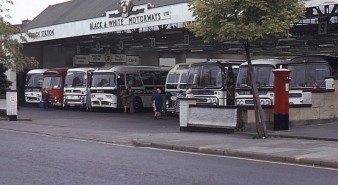




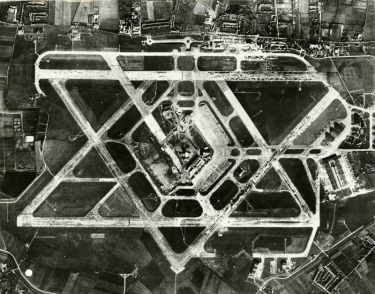
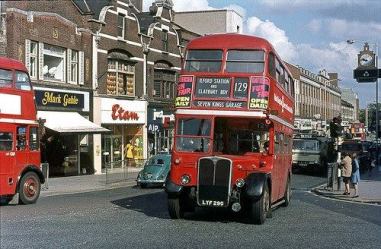
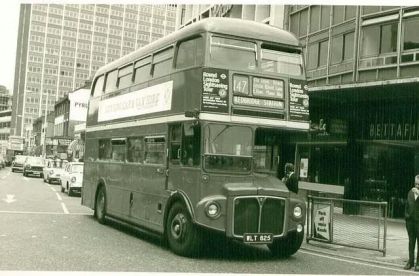
06/12/2016 at 12:31
Hello Alan. I often saw the Green Line buses going through Ilford out to other parts of Essex, and beyond.
And trolleybuses were common – I often took the 693 from Seven Kings to Chadwell heath.
LikeLike
06/12/2016 at 14:59
Yes, I meant to put trolleybuses in!
LikeLike